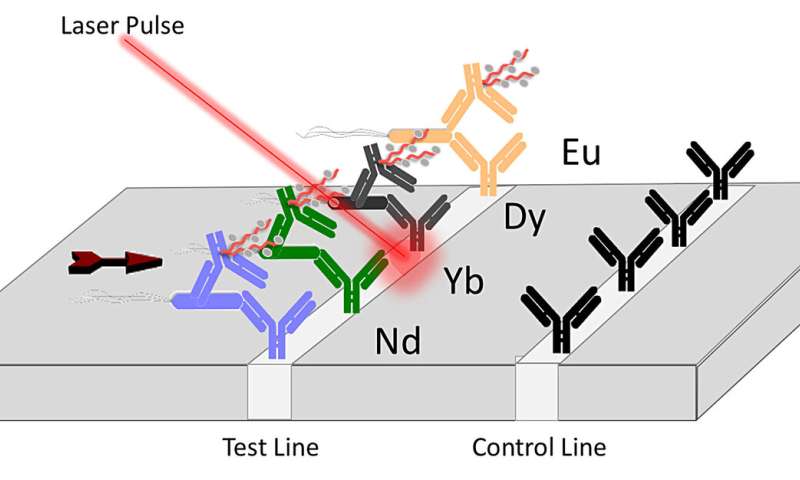New technology for pathogen detection driven by lasers
by Chris Adam
Researchers at Purdue University have been working to develop new technologies to help stop the spread of foodborne illnesses, which kill 3,000 people a year, by detecting them more efficiently. They have developed a lanthanide-based assay coupled with a laser that can be used to detect toxins and pathogenic E. coli in food samples, water and a variety of industrial materials.
The two key features of the new technology are the incorporation of lanthanides and simple lateral flow paper-based assays. The Purdue team created a method for combining different heavy metals that when linked to antibodies can detect multiple agents in a single analysis. The Purdue team's work is published in the January edition of Analytical and Bioanalytical Chemistry.
"Our goal was to incorporate easily detectable elements into a paper-based assay which is low-cost and effective," said J. Paul Robinson, the SVM Professor of Cytomics in Purdue's College of Veterinary Medicine and a professor of biomedical engineering in Purdue's College of Engineering. "Designing a technology that is both low-cost but also accurate and can detect multiple antigens simultaneously was a critical factor in our decision to work on this problem."
"We are very excited about the acceptance of the intellectual property as this will enhance the possibility of finding commercial partners," Robinson said. "The potential for moving this to handheld, field deployable use is something we see in the future."
The group is evaluating the potential for fully portable use that would allow field use in virtually any environment.
The approach uses a high-powered laser pulse to obliterate a sample, while simultaneously collecting the spectral signature of the resultant emission. These signals are then compared with a database that translates the signals into an identification of the toxin or pathogen.
The work presented in this paper shows the proof of principle and is the basis for significant expansion of the studies. What makes the technology effective is the linking of antibodies to different heavy metal tags. This creates a unique fingerprint of atomic signatures that can be used to determine if any particular pathogen of interest in present in a sample.
More information: Carmen Gondhalekar et al. Detection of E. coli labeled with metal-conjugated antibodies using lateral-flow assay and laser-induced breakdown spectroscopy, Analytical and Bioanalytical Chemistry (2020). DOI: 10.1007/s00216-019-02347-3
Journal information: Analytical and Bioanalytical Chemistry
Provided by Purdue University